Exploring the DaKine Harness: Essential Kiteboarding Gear
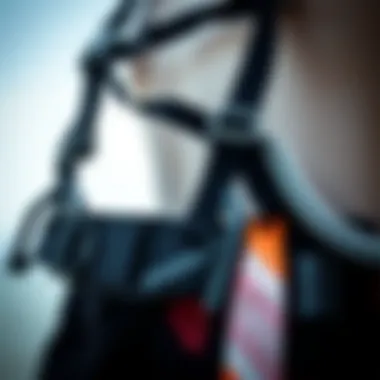
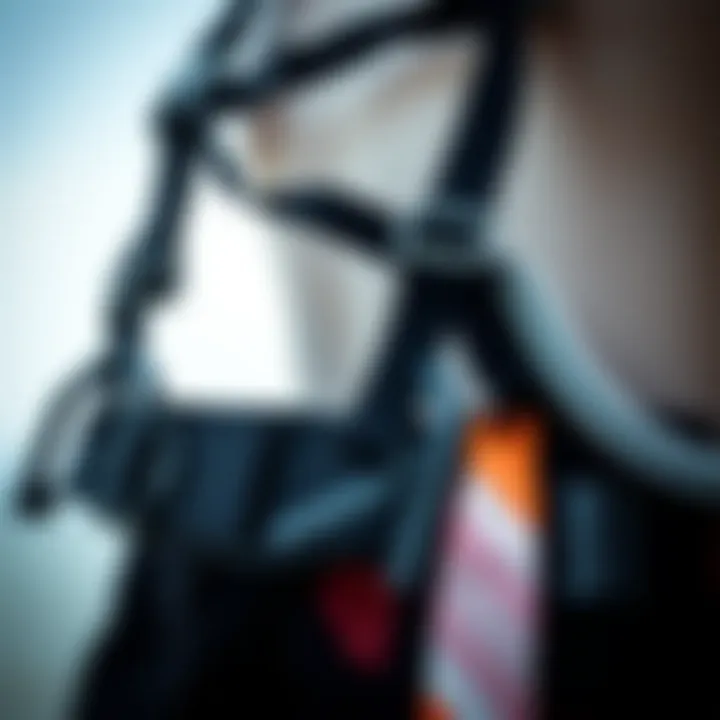
Intro
Kiteboarding, an extreme sport that dances between land and sea, has gained massive traction as more enthusiasts seek thrills in the wind and waves. At the heart of this exhilarating sport lies a critical piece of equipment—the harness. Among various brands vying for attention, the DaKine harness stands out, thanks to its innovative design and functionality. This article will peel back the layers of what makes the DaKine harness a favorite among kiteboarders. We'll look closely at its construction, the options available in the market, and insights from users who live and breathe this adventurous sport.
Whether you’re a newcomer to the world of kiteboarding or a seasoned pro, knowing the in's and out's of your gear can make or break your experience on the water. Given that it's a pivotal element affecting comfort and performance, a thorough understanding of the DaKine harness can significantly enhance your ride. Let's explore how this piece of equipment can provide you with the support needed to tackle the waves and conquer the winds.
Preamble to Kiteboarding Gear
Kiteboarding, an exhilarating blend of surfing, windsurfing, and paragliding, relies heavily on the quality and type of gear used. Proper kiteboarding equipment can make the difference between a thrilling ride and an arduous struggle on the water. Understanding kiteboarding gear is essential for both beginners and seasoned riders alike. This article aims to illuminate the various components of kiteboarding gear, focusing specifically on the DaKine harness, a critical piece of this puzzle.
Let’s face it, you wouldn’t wear ill-fitting shoes for a marathon, right? The same logic applies to kiteboarding. Harnesses that lack comfort or proper support can result in increased fatigue and decreased control, ultimately affecting one’s overall experience on the water. Therefore, knowing which gear suits your riding style, skill level, and body type is vital. A well-thought-out selection might just propel you into the perfect kiteboarding adventure or leave you grappling with discomfort and frustration.
The Importance of Proper Gear
The importance of the right gear in kiteboarding cannot be overstated. In the world of water sports, your equipment isn’t just gear—it’s your lifeline to freedom, performance, and safety. The proper harness elevates your ability to control your kite, maneuver efficiently, and engage in tricky tricks without feeling like you’re being tugged every which way.
With the right harness, not only can you boost your confidence, but you also have a much higher chance of advancing your skills. Whether you're slicing through waves or catching air, the right equipment complements your body’s natural movements, making everything smoother. A poor-fitting or low-quality harness can easily sap your energy and enjoyment, turning a day at the beach into a sore memory.
Overview of Kiteboarding Essentials
While the DaKine harness is central to this discussion, kiteboarding gear consists of several key components that all work together to provide a safe and enjoyable experience. Here’s a quick rundown of essentials:
- Kite: The heart of your setup, the kite converts wind energy into propulsion.
- Board: Your connection to the water, the board is where you stand while harnessing the power of the kite.
- Lines and Bar: These allow you to steer the kite and control its power.
- Safety Systems: Always necessary for quick release mechanisms to ensure safety while riding.
- Protective Gear: Helmets, impact vests, and pads that can prevent injuries.
When selecting your kiteboarding gear, it’s critical to consider how these components interact. For example, a lightweight kite might pair perfectly with a more flexible board, allowing for graceful agility in the water. However, neglecting to choose a compatible harness can inhibit your full potential on the waves.
As we delve into the DaKine harness, we will explore its history, evolution, and various features, showcasing its role within this essential gear matrix. The journey into understanding kiteboarding gear starts with the basics, and from there, we will refine our focus onto the DaKine harness, emphasizing its standout qualities and user feedback. Truly, knowing how each piece fits together can elevate your kiteboarding experience far beyond the water's surface.
Understanding the DaKine Harness
The DaKine harness is more than just a piece of equipment; it's a vital connection between the kiteboarder and their chosen sport. By comprehending its nuances, users can refine their riding abilities and fully enjoy the experience of kiteboarding. A well-chosen harness caters to the individual needs of the rider, impacting everything from control to comfort.
History and Evolution
DaKine, established in 1979, began its journey with surf accessories and has evolved into a recognized name in the kiteboarding community. The evolution of their harnesses parallels the growing demands of the kiteboarding sport itself. Early harness designs were quite basic, often leading to discomfort and poor performance. Over time, DaKine refined their products through extensive testing and feedback from riders.
Innovations like the introduction of adaptive materials helped transition the harness from a simple functional item to a highly specialized gear. The harness now reflects a balance of comfort, style, and functionality. Today’s DaKine harnesses speak to a legacy of craftsmanship combined with cutting-edge technology, suited for both amateurs and seasoned professionals.
Key Features
A DaKine harness encompasses several features, each contributing to the overall experience of kiteboarding. The emphasis on quality and performance is evident in three particularly significant areas: material technology, adjustability and fit, and padding and comfort.
Material Technology
The foundation of a good harness begins with its materials. DaKine uses high-quality, durable fabrics that withstand the rigors of kiteboarding. These materials often incorporate elements like water-resistant coatings and strong stitching, which ensures longevity. A notable feature is the use of lightweight composites that reduce bulk while still providing necessary support.
This material technology is not only popular for its durability but also for its ability to keep the harness lightweight. That means riders can focus more on their maneuvers rather than feeling weighed down.
Adjustability and Fit
An adjustable harness allows for a customized fit, which is crucial. DaKine has incorporated advanced adjustable features that accommodate varying body shapes and riding styles. The unique ratcheting system enables riders to quickly and easily modify the harness for optimal comfort and performance.


This adjustability is a selling point, as it eliminates unnecessary movement that can occur with poorly fitted gear. Riders can dial in their settings to match their personal preference, creating a more immersive kiteboarding experience.
Padding and Comfort
Comfort cannot be overlooked for kiteboarders, who may spend long hours on the water. DaKine harnesses feature strategically placed padding that not only cushions but also distributes pressure across the body. This feature is particularly significant for preventing fatigue and discomfort during extended sessions.
The padding, combined with breathable materials, keeps the wearer cool and dry. This balance of structure and comfort is why many riders lean towards DaKine as their trusted gear provider.
The understanding of the DaKine harness goes beyond just knowing what it’s made of or its features. It’s about appreciating the evolution of design that meets the ever-changing needs of kiteboarders. Therefore, the harness serves as a pivotal piece of gear that can enhance the entire kiteboarding experience.
"A harness is like the bicycle seat of kiteboarding—it needs to be just right for the ride to be enjoyable."
In summary, the DaKine harness not only represents innovation but also a commitment to improving the rider's journey in kiteboarding.
Types of DaKine Harnesses
Understanding the different types of DaKine harnesses is essential for kiteboarding enthusiasts. When it comes to performance and comfort on the water, the choice between waist and seat harnesses can have a significant impact. Each type serves its own set of preferences and riding styles, ultimately influencing how one maneuvers and feels during kiteboarding.
Waist Harnesses
Advantages
Waist harnesses are often favored for their flexibility and low-profile design. They sit snug around the waist, allowing for a full range of motion while you ride the waves. One of the key advantages is the distribution of pressure over the hips rather than directly on the lower back, which many riders find more comfortable during long sessions. This allows you to maintain better posture, making it a beneficial choice for riders who prioritize movement.
Moreover, a well-fitted waist harness can offer the rider increased agility, promoting quicker turns and maneuvers that are essential for advanced tricks. However, it is crucial to select the right size, as a poorly fitting harness can lead to discomfort or even injury during intense rides.
Popular Models
Among the popular models of DaKine waist harnesses, the DaKine Tabular stands out for its innovative design. It incorporates a unique spreader bar that adds stability while minimizing unwanted movement. This specific model has received positive feedback from users, largely due to its durable material and effective support features.
The DaKine Pyro is another well-received option. Notable for its blend of comfort and functionality, this harness caters to both beginners and experienced kiteboarders alike. The combination of high-quality materials and streamlined design makes it a solid choice, ensuring that many riders enjoy an enhanced experience on the water.
Best Fit Practices
Finding the right fit for a waist harness is paramount. To ensure a snug fit, start by measuring your waist size. It is essential to try on the harness while standing up, as many adjustments can feel different once on the board. Adjustability is a standout characteristic of many DaKine waist harnesses, often featuring multiple straps that allow for fine-tuning.
A common practice is to check that the harness sits above your hip bones when fastened. Riders should also consider how it feels while moving; a harness that feels restrictive or too loose can hinder performance. Thus, taking the time to adjust and test the fit while simulating riding conditions can significantly enhance the overall experience.
Seat Harnesses
Advantages
Seat harnesses are a different ballgame, aimed primarily at providing more support for the lower back and hips. They are designed to sit lower on the body, which is beneficial for those who might struggle with discomfort from waist harnesses. The key advantage here is stability—great for beginners or those focusing on long-distance rides, as they help with better posture by distributing weight evenly.
This type of harness often provides a larger surface area against the back, which helps in effectively managing the pull from the kite. For riders who spend more time in the water, such as surfers or those who enjoy catching waves, seat harnesses can offer a reliable alternative.
Popular Models
The DaKine Fusion is a popular seat harness known for its adjustability and ergonomic design. With features that prioritize comfort, this model caters to those who prefer a more secure fit as they navigate the kiteboarding experience.
Another notable model is the DaKine Cosmo, which combines feminine design with robustness. Its cushioning and support elements are well-suited for female kiteboarders who seek stability without sacrificing comfort. Both models highlight the effectiveness of seat harnesses in optimizing performance during various conditions.
Best Fit Practices
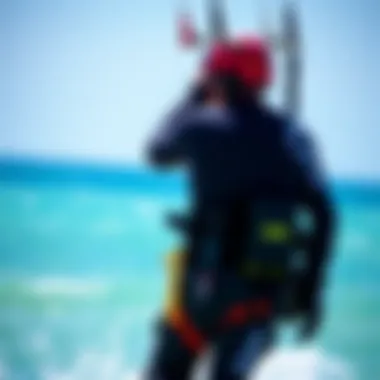
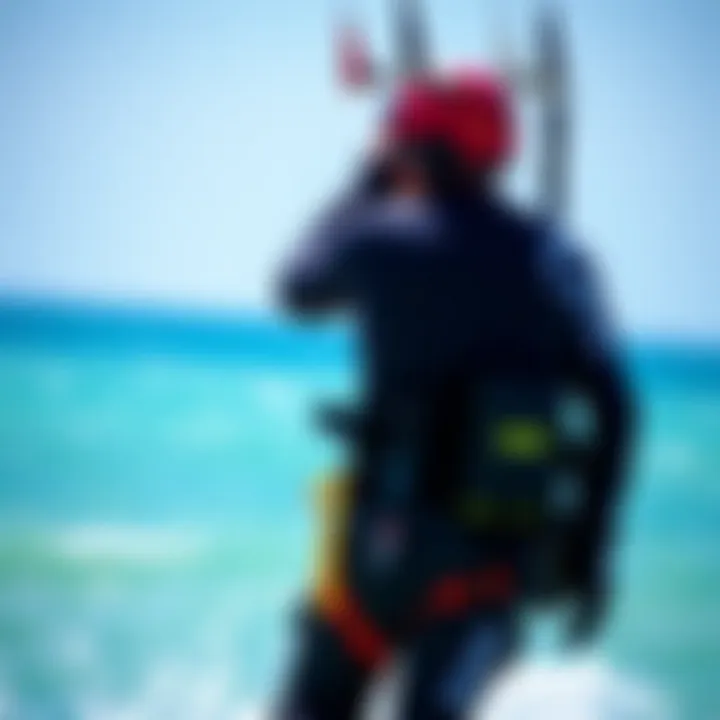
Just like with waist harnesses, the fit of a seat harness is crucial. To achieve a proper fit, sit down in the harness. It should feel snug but not overly tight. Many brands, including DaKine, offer models with adjustable leg straps to ensure a personalized fit.
It's worth noting that a good seat harness should allow you to move without restriction. Ensuring the harness does not ride up too high while riding is important for avoiding distractions. Riders should try to fine-tune settings while in a seated position, aiming for comfort during actual kiteboarding activity.
In summary, understanding the various types of DaKine harnesses and their features is fundamental for kiteboarders. Whether opting for a waist or a seat harness, the emphasis on proper fit and selection can make all the difference in achieving an enjoyable, successful kiteboarding outing.
Performance Considerations
In the dynamic world of kiteboarding, the choice of harness plays a pivotal role in overall performance. Performance considerations encompass how a harness affects riding style and maneuverability, both of which are crucial for maximizing enjoyment on the water. A well-fitted harness not only enhances comfort but also supports the rider's ability to navigate various kiteboarding conditions effectively. When an individual is properly harnessed, they can focus their energy on their movements and techniques, rather than on overcoming any discomfort or gear limitations.
Impact on Riding Style
The riding style of an individual kiteboarder significantly hinges on the type of harness used. The DaKine harness, with its thoughtfully designed structure, can influence how riders interact with the kite and their board. For example, waist harnesses typically allow for a greater range of motion compared to seat harnesses. This is essential for those who thrive on tricks and jumps. Riders favoring a more aggressive style may prefer a snug fit that keeps them closely connected to the kite, facilitating quick turns and shifts in weight.
On the flipside, those who enjoy a more relaxed cruising style might benefit from harnesses that offer a bit more freedom and comfort. It’s crucial to identify how the harness can adapt to one's individual technique. The balance between snugness and flexibility can be the difference between landing a trick perfectly or hitting the water prematurely. Riders often share experiences regarding how their choice affected their ability to execute certain maneuvers. As a result, the synergy between the kiteboarding gear and the rider’s style is a critical area of focus for performance.
"An ill-fitted harness can make the most seasoned rider feel like a fish out of water."
Influence on Maneuverability
Maneuverability is another key aspect influenced by the choice of harness. The DaKine harness system offers unique attributes that enhance a rider's responsiveness to their environment. The degree to which a harness stays close to the body impacts how well a rider can shift their weight. For instance, the usage of high-quality materials can ensure minimal bulk while maintaining durability, allowing for sharp turns and agility on the water.
Harnesses with adequate padding can also reduce wear and tear during longer sessions, permitting riders to push their limits without feeling like they got hit by a truck afterward. A common observation noted in various community reviews is how certain models cater specifically to style preferences—some allowing for more fluid, sweeping movements while others permit rapid, controlled turns.
Furthermore, understanding the connection between the harness and kite responsiveness is vital. A kite that reacts efficiently to the rider's weight transitions can improve stability, facilitating smooth aerial maneuvers. It’s not just about personal comfort; it’s also about how the harness contributes to a rider's ability to remain light on their toes in variable wind conditions.
Overall, performance considerations are intertwined with the selection of a harness, affecting riding style and the agility to maneuver in varying environments. Mastery in kiteboarding is not solely a product of skill; it includes understanding and adapting gear to enhance one’s own unique riding experience.
User Perspectives
Understanding user perspectives is crucial in making informed decisions about kiteboarding gear, especially when it comes to harnesses like those from DaKine. What better way to gauge the effectiveness and comfort of a harness than by listening to those who have hit the waters with it? Whether they are rookies still trying to figure out how to balance or seasoned riders carving up waves, their feedback provides valuable insights that can help potential buyers find the best fit for their performance and comfort needs.
Feedback from Beginners
For those just strapped into the world of kiteboarding, the selection of a harness can be overwhelming. Beginners often express their desires for ease and comfort right from their very first ride. Many first-time users of the DaKine harness highlight how intuitive the fit is. They appreciate features like quick adjustment systems that allow them to find a snug fit without diving into a multi-step process.
- Loss of Sense of Security: Beginners have reported that a well-fitted harness gives them a sense of security that emboldens them to push through their fears of falling.
- Flexibility Matters: Beginners often cite how the DaKine harness allows them more flexibility, making it easier to maneuver as they learn.
- Padding Preference: The cushioning found in the harness is also a hit, as many new kiteboarders often find that it protects them during those inevitable falls.
This initial feedback isn't just noise. It reflects a larger trend where the comfort and usability of harnesses can play a significant role in whether someone sticks with the sport.
Insights from Professionals
Moving to the other end of the spectrum, professional kiteboarders have their own set of criteria when it comes to selecting a harness. These riders rely heavily on performance and feedback often focuses on how well the harness can elevate their skills. Professionals frequently mention the material technology utilized in DaKine harnesses as a standout feature. They appreciate how high-quality materials contribute not just to durability but also prevent wear and tear during high-impact rides.
- Performance Measurement: Professionals often assess the harness based on how it enhances their performance on the water. A good harness facilitates easier transitions and allows for more fluid motions.
- Adjustability in Action: The ability to customize the fit while underway is another essential aspect highlighted by experienced users. A harness that can be easily adjusted on-the-fly allows riders to maintain focus on the waves rather than worry about discomfort.
- Tech for Tactics: Many professionals also rely heavily on the expertise embedded in the product design. They appreciate how aspects like load distribution can impact their overall performance during competitive events.
Community Reviews
The kiteboarding community is vast, with forums and social media platforms buzzing with chatter about the latest gear. User reviews across sites such as Reddit and Facebook form a rich tapestry of feedback. Community members often share their experiences, creating an informal yet powerful source of information.
- Shared Experiences: Online platforms allow both beginners and pros to discuss their experiences with the DaKine harness openly. This exchange fosters a broader understanding of the product’s strengths and weaknesses.
- Real-Time Recommendations: Users often recommend specific models based on individual experiences, aiding newcomers in making informed choices.
- Problem-Solving Insights: Community discussions have led to shared tips on how to troubleshoot common harness-related issues, from adjustments to maintenance of the harness.
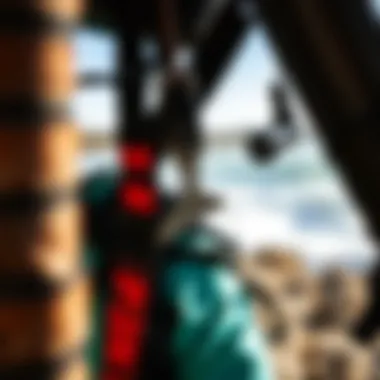
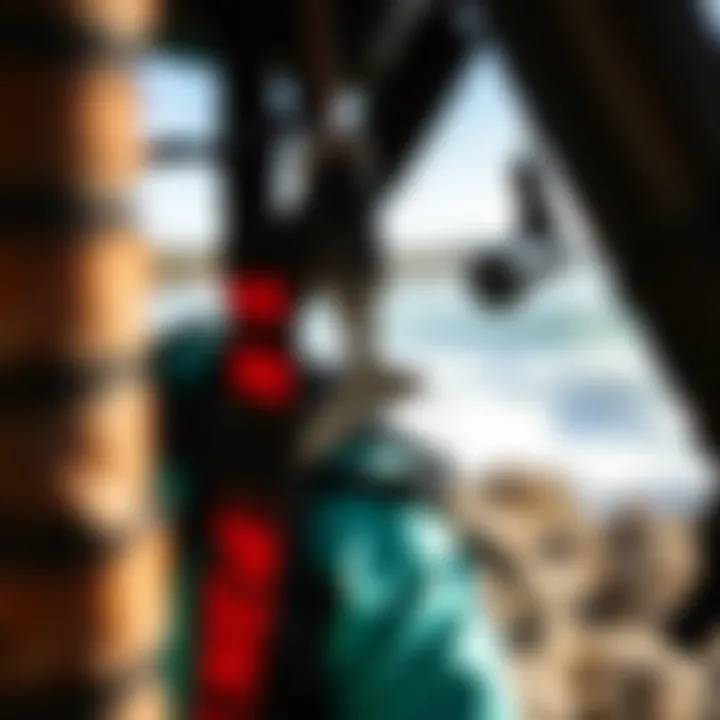
Ultimately, user perspectives serve not only as testimonials but also as instructional guides that can significantly influence purchasing decisions. Understanding the experiences of other kiteboarders—whether novice or expert—can provide a well-rounded view of how the DaKine harness fits into the larger context of kiteboarding gear.
Challenges and Solutions
The realm of kiteboarding, while exhilarating, is not without its share of challenges, especially when it comes to using harnesses. A DaKine harness, known for its quality and sophisticated design, can make a world of difference in performance. However, recognizing and overcoming common issues is paramount to ensure enjoyment and effectiveness on the water. This section provides insights into the prevalent challenges faced by kiteboarders and practical solutions that can enhance overall riding experience.
Common Issues with Harnesses
When it comes to harnesses, kiteboarders often face specific issues that can impact their performance and comfort. Here’s a rundown of hurdles one might encounter:
- Fit and Sizing: Many riders wrestle with finding the right size. A harness that's too loose can slide, while one that's too tight can restrict movement and circulation. This can lead to diminished control during maneuvers and a less enjoyable ride.
- Ride Up: It’s a familiar complaint among novice and experienced kiteboarders alike. If the harness rides up during rides, it can cause friction and discomfort, pulling on the body in all the wrong ways.
- Chafing and Rubbing: Harness materials can sometimes lead to skin irritation, especially when waterlogged. The combination of saltwater, sand, and movement can irritate the skin, creating a sore spot that can ruin the day.
- Inadequate Support: Some harnesses fail to provide the level of support necessary for larger jumps or long sessions. Riders may find themselves lacking the required back support, leading to fatigue and discomfort.
Understanding these issues not only helps in making informed decisions but also equips riders with the ability to prevent negative experiences.
Avoiding Discomfort
Discomfort can be a boat anchor when kiteboarding. Fortunately, with the right knowledge and a bit of foresight, it can often be sidestepped. Here are several strategies:
- Proper Fit: Always ensure that the harness fits snugly but comfortably. Many brands, including DaKine, provide sizing charts. Don’t hesitate to try on different models to find what suits your body best.
- Adjust the Straps: Harnesses like the DaKine feature adjustable straps. Take a moment before hitting the waves to make sure they’re snug but not constricting to avoid that dreaded ride-up.
- Material Matters: Choose harnesses made from breathable and flexible materials. Look for options with moisture-wicking properties that can help decrease chafing caused by saltwater and sand.
- Cushioned Support: Models that come with ample padding in the back can offer essential comfort during long sessions. Some users find that adding an extra layer of padding, like a neoprene short, can help alleviate pressure points.
- Take Breaks: Sometimes, a simple solution is just to listen to your body. Frequent breaks allow you to adjust your harness and relieve pressure spots before they turn into significant issues.
"A well-fitted harness is not just about comfort; it can literally save your day on the water."
By addressing these challenges thoughtfully and making the necessary adjustments, kiteboarders can enjoy a more comfortable riding experience with their DaKine harness, allowing them to focus on the thrill of the ride.
Maintenance and Care
Caring for your DaKine harness is as crucial as choosing the right one in the first place. A well-maintained harness not only lasts longer but also performs better on the water. If you think about it, your harness is like a trusted companion. It needs attention to keep it in top shape, especially after those long, salty days at the beach. Proper maintenance can save you from unexpected discomfort or even injury due to wear and tear. Let's not beat around the bush: taking a few minutes to clean and store your gear after each session can make a world of difference in life expectancy and performance.
Cleaning Techniques
Keeping your DaKine harness clean is a simple but effective way to maintain its functionality. Saltwater, sand, and sweat can wreak havoc on materials over time. Here’s how you can keep it in tip-top shape:
- Rinse Thoroughly: After each use, rinse your harness with fresh water right away. This helps eliminate salt and sand that might cause premature damage.
- Gentle Soap Wash: Every now and then, use a mild soap to clean the harness. Mix a bit of soap in a bucket of water and use a soft brush to scrub away any grime. Be gentle with the delicate areas, especially the straps.
- Dry Properly: Lay your harness flat on a clean surface to dry it completely away from direct sunlight. Sun can fade colors and weaken materials over time. Never use a dryer or leave it crumpled in a damp environment; this could lead to mold or unpleasant odors.
- Inspect Regularly: Keep an eye out for frayed straps or damaged buckles. A little proactive checking can save you a lot of trouble later on.
Remember: Proper cleaning enhances the performance and lifespan of your equipment, keeping you comfortable while kiteboarding.
Storage Tips
Once your harness is clean and dry, storing it correctly is the next step in your maintenance ritual. Here are some good practices to consider:
- Cool and Dry Place: Store your harness in a cool, dry area. Avoid leaving it in a hot car or in direct sunlight for long periods, as high temperatures can deteriorate materials.
- Avoid Folding: If possible, hang your harness or lay it flat rather than folding it. This prevents creases that might weaken the structure.
- Protective Bag: Consider investing in a protective bag for your harness. A good bag can keep it safe from dust, moisture, and mechanical damage while it’s not being used.
- Check Periodically: Every so often, take your harness out and inspect it, even during off-season months. This way, you can catch any potential problems before your next adventure.
In the end, taking the time to properly maintain and care for your DaKine harness not only prolongs its lifespan but also ensures that you’re riding safely and comfortably whenever you hit the water. Set a routine for cleaning and storage, and your harness will repay you with reliable performance for many seasons to come.
End
In wrapping up our examination of the DaKine harness, it’s essential to distill the core reasons why selecting the right harness is paramount for kiteboarding enthusiasts. A well-chosen harness not only impacts comfort but also influences overall performance in the water. The right fit can make the difference between an enjoyable ride and a battle against discomfort that leaves you drained.
Choosing the Right DaKine Harness
When navigating through the myriad of DaKine harness options available, it’s wise to keep a few key elements in mind. Start with the type of harness—waist or seat. Each serves a different purpose, with waist harnesses offering a more freestyle-friendly experience, while seat harnesses provide significant support for beginners and those who prefer a bit more stability.
Further, consider the material technology featured in the harness. DaKine uses advanced materials that promise durability and resistance to wear and tear from salt and sun exposure. Also, think about the adjustability and fit. A harness that snugly fits your body can vastly improve your riding experience. Most models feature adjustable straps that enhance comfort and customization. Lastly, padding and comfort should never be overlooked. Neoprene lining often gives a soft touch against the skin, helping to ease hours spent on the water.
Final Thoughts
Deciding on the right DaKine harness comes down to understanding your own preferences and needs as a rider. Investing time in selecting the ideal harness can significantly enhance your kiteboarding experience. As you venture into the waves and harness the winds, remember that the right gear is your ally. The selection process should not be a hurried decision; it's worth taking your time to evaluate various models, reading reviews, and even seeking advice from fellow riders. The objective is to find a harness that feels like an extension of yourself, allowing you to perform at your best.
Before you hit the water, gather as much information as you can. Forums like reddit.com often have discussions about the best models for different skill levels. Checking user reviews on dedicated websites will also guide you in making an informed choice. In this ever-evolving sport of kiteboarding, being equipped with the right harness can make all the difference in truly enjoying each ride.















